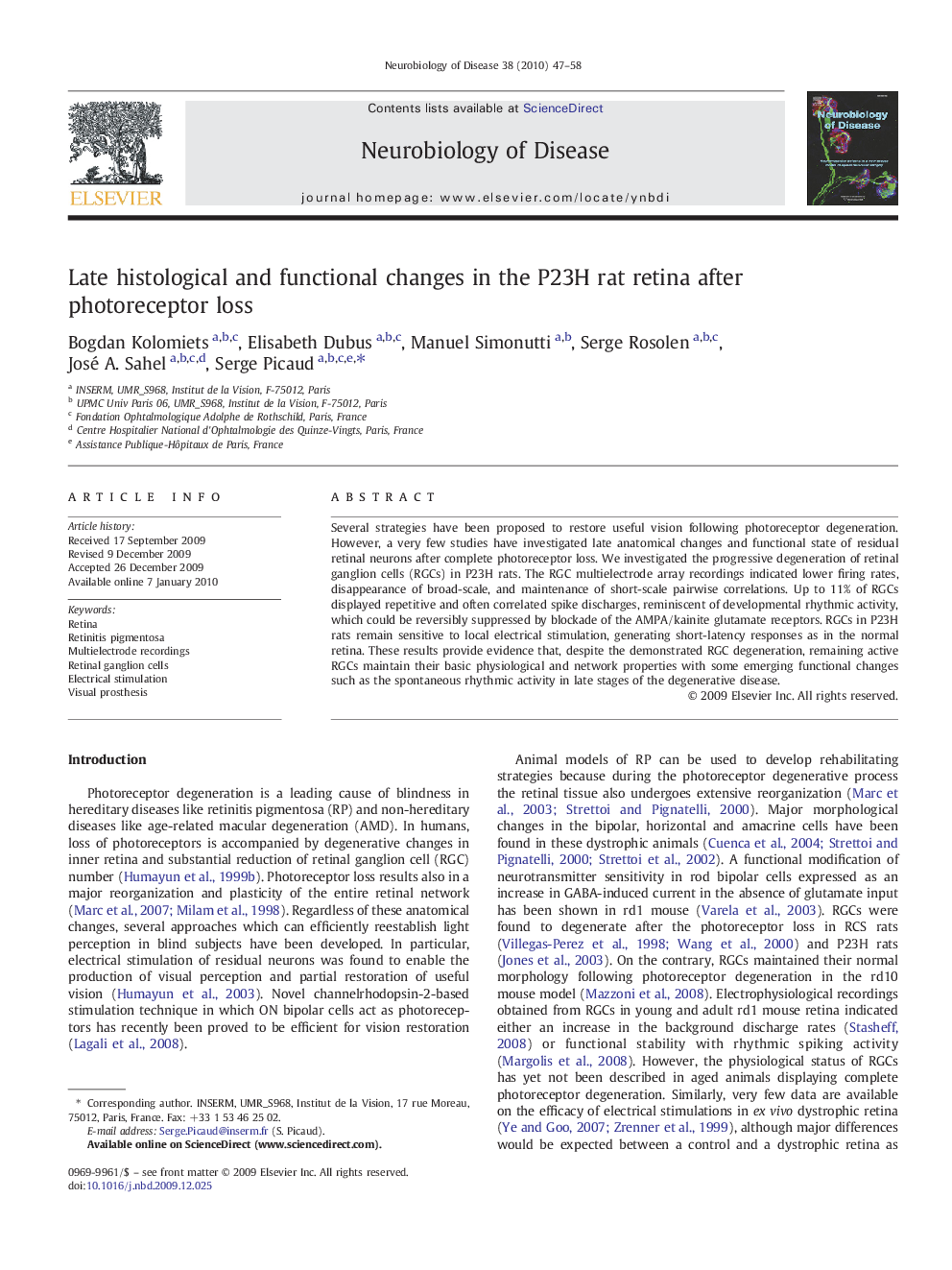| Article ID | Journal | Published Year | Pages | File Type |
|---|---|---|---|---|
| 3069956 | Neurobiology of Disease | 2010 | 12 Pages |
Several strategies have been proposed to restore useful vision following photoreceptor degeneration. However, a very few studies have investigated late anatomical changes and functional state of residual retinal neurons after complete photoreceptor loss. We investigated the progressive degeneration of retinal ganglion cells (RGCs) in P23H rats. The RGC multielectrode array recordings indicated lower firing rates, disappearance of broad-scale, and maintenance of short-scale pairwise correlations. Up to 11% of RGCs displayed repetitive and often correlated spike discharges, reminiscent of developmental rhythmic activity, which could be reversibly suppressed by blockade of the AMPA/kainite glutamate receptors. RGCs in P23H rats remain sensitive to local electrical stimulation, generating short-latency responses as in the normal retina. These results provide evidence that, despite the demonstrated RGC degeneration, remaining active RGCs maintain their basic physiological and network properties with some emerging functional changes such as the spontaneous rhythmic activity in late stages of the degenerative disease.
